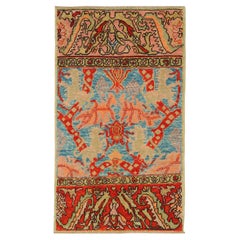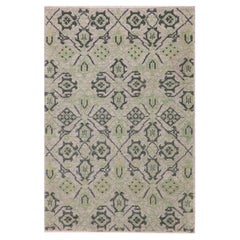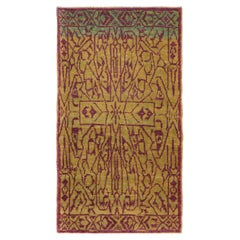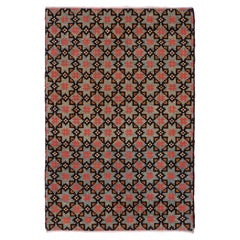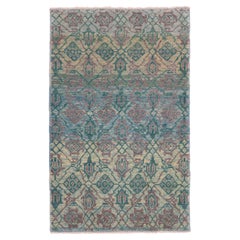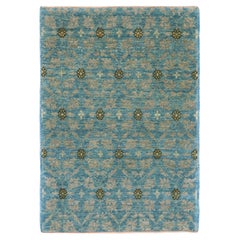ARARAT RUGS
21st Century and Contemporary Turkish Revival Persian Rugs
Wool, Natural Fiber, Organic Material
21st Century and Contemporary Turkish Revival Turkish Rugs
Wool, Natural Fiber, Organic Material
21st Century and Contemporary Turkish Revival Turkish Rugs
Wool, Natural Fiber, Organic Material
2010s Turkish Revival Turkish Rugs
Wool, Natural Fiber, Organic Material
21st Century and Contemporary Turkish Revival Turkish Rugs
Wool, Natural Fiber, Organic Material
21st Century and Contemporary Turkish Revival Turkish Rugs
Wool, Natural Fiber, Organic Material
21st Century and Contemporary Turkish Revival Turkish Rugs
Wool, Natural Fiber, Organic Material
21st Century and Contemporary Turkish Revival Persian Rugs
Wool, Natural Fiber, Organic Material
21st Century and Contemporary Turkish Oushak Turkish Rugs
Wool, Natural Fiber, Organic Material
21st Century and Contemporary Turkish Revival Turkish Rugs
Wool, Natural Fiber, Organic Material
21st Century and Contemporary Turkish Revival Persian Rugs
Wool, Natural Fiber, Organic Material
21st Century and Contemporary Turkish Revival Persian Rugs
Wool, Natural Fiber, Organic Material
21st Century and Contemporary Turkish Revival Persian Rugs
Wool, Natural Fiber, Organic Material
21st Century and Contemporary Turkish Revival Turkish Rugs
Wool, Natural Fiber, Organic Material
21st Century and Contemporary Turkish Revival Persian Rugs
Wool, Natural Fiber, Organic Material
21st Century and Contemporary Turkish Revival Turkish Rugs
Wool, Natural Fiber, Organic Material
21st Century and Contemporary Turkish Revival Turkish Rugs
Wool, Natural Fiber, Organic Material
21st Century and Contemporary Turkish Revival Turkish Rugs
Wool, Natural Fiber, Organic Material
21st Century and Contemporary Turkish Revival Turkish Rugs
Wool, Natural Fiber, Organic Material
21st Century and Contemporary Turkish Revival Turkish Rugs
Wool, Natural Fiber, Organic Material
21st Century and Contemporary Turkish Revival Persian Rugs
Wool, Natural Fiber, Organic Material
21st Century and Contemporary Turkish Revival Persian Rugs
Wool, Natural Fiber, Organic Material
21st Century and Contemporary Turkish Revival Persian Rugs
Wool, Natural Fiber, Organic Material
21st Century and Contemporary Turkish Revival Turkish Rugs
Wool, Natural Fiber, Organic Material
21st Century and Contemporary Turkish Arts and Crafts Western European Rugs
Wool, Natural Fiber, Organic Material
21st Century and Contemporary Turkish Revival Persian Rugs
Wool, Natural Fiber, Organic Material
21st Century and Contemporary Caucasian Revival Caucasian Rugs
Organic Material, Natural Fiber, Wool
Early 20th Century Turkish Oushak Turkish Rugs
Wool, Natural Fiber
Early 20th Century Turkish Oushak Turkish Rugs
Wool, Natural Fiber
Early 20th Century Caucasian Oushak Caucasian Rugs
Wool, Natural Fiber
Early 20th Century Turkish Oushak Turkish Rugs
Wool, Natural Fiber, Organic Material
Early 20th Century Turkish Oushak Turkish Rugs
Wool, Natural Fiber
Mid-20th Century Uzbek Oushak Central Asian Rugs
Wool, Natural Fiber
Early 20th Century Turkish Oushak Turkish Rugs
Wool, Natural Fiber, Organic Material
Early 20th Century Turkish Oushak Turkish Rugs
Wool, Natural Fiber, Organic Material
Early 20th Century Turkish Kilim Turkish Rugs
Wool, Natural Fiber, Organic Material
Early 20th Century Turkish Kilim Turkish Rugs
Wool, Natural Fiber
Antique Mid-19th Century Caucasian Kilim Caucasian Rugs
Wool, Natural Fiber
Mid-20th Century Caucasian Kilim Turkish Rugs
Wool, Natural Fiber
Mid-20th Century Caucasian Kilim Caucasian Rugs
Natural Fiber, Wool
Mid-20th Century Caucasian Kilim Caucasian Rugs
Wool, Natural Fiber
Antique Late 19th Century Turkish Kilim Turkish Rugs
Wool, Natural Fiber, Organic Material
Mid-20th Century Turkish Kilim Turkish Rugs
Wool, Natural Fiber
Early 20th Century Turkish Kilim Turkish Rugs
Wool, Natural Fiber
Early 20th Century Turkish Kilim Turkish Rugs
Wool, Natural Fiber
Mid-20th Century Turkish Kilim Turkish Rugs
Wool, Natural Fiber
Early 20th Century Turkish Kilim Turkish Rugs
Natural Fiber, Wool
Mid-20th Century Turkish Kilim Turkish Rugs
Wool, Natural Fiber
Mid-20th Century Turkish Kilim Turkish Rugs
Wool, Natural Fiber
Mid-20th Century Turkish Kilim Turkish Rugs
Wool, Natural Fiber, Organic Material
Early 20th Century Turkish Kilim Turkish Rugs
Natural Fiber, Wool
Mid-20th Century Turkish Kilim Turkish Rugs
Wool, Natural Fiber
Early 20th Century Turkish Kilim Turkish Rugs
Wool, Natural Fiber
Late 20th Century Caucasian Kilim Caucasian Rugs
Natural Fiber, Wool
Early 20th Century Turkish Kilim Turkish Rugs
Wool, Natural Fiber
Early 20th Century Caucasian Kilim Caucasian Rugs
Natural Fiber, Wool
Mid-20th Century Turkish Kilim Turkish Rugs
Wool, Natural Fiber
Early 20th Century Turkish Kilim Turkish Rugs
Wool, Natural Fiber
Late 20th Century Turkish Kilim Turkish Rugs
Wool, Natural Fiber
Mid-20th Century Turkish Kilim Turkish Rugs
Natural Fiber, Wool
